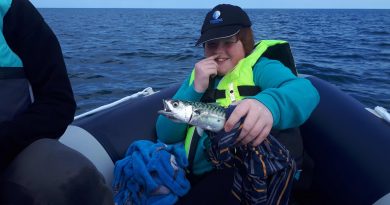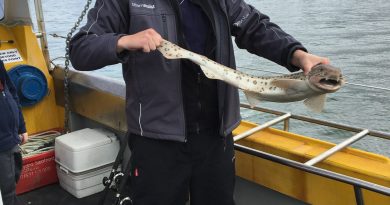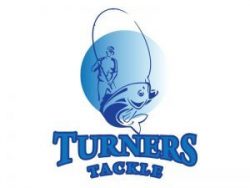A Guide to Finding Wrecks for Sea Fishing Around the UK
The waters surrounding the United Kingdom conceal a maritime tapestry of history, with sunken wrecks serving as both historical artifacts and fertile grounds for sea anglers. Discovering these submerged treasures can be a thrilling aspect of sea fishing, promising encounters with a variety of fish species that often congregate around wrecks. In this article, we explore the strategies and tools that can help anglers locate wrecks and enhance their sea fishing experiences.
- Utilize Nautical Charts and Maps: Nautical charts and maps are invaluable resources for anglers seeking wrecks. These charts often mark the locations of known wrecks, providing details about the type of vessel, depth, and surrounding underwater terrain. Invest in up-to-date charts specific to the region you intend to fish, and familiarize yourself with the symbols and legends indicating wreck sites.
- Online Resources and Apps: In the digital age, online resources and mobile apps can significantly aid anglers in their quest for wrecks. Various websites and apps offer interactive maps, user-generated content, and databases with information on wreck locations. Make use of these tools to supplement traditional charts and gather insights from the experiences of other anglers.
- Sonar Technology: Modern sonar technology has revolutionized wreck fishing. Fishfinders and side-scan sonar devices can reveal detailed images of the seafloor, including wrecks and other underwater structures. Invest in a quality sonar unit and take the time to learn how to interpret the readings effectively. Side-scan sonar, in particular, provides a wide view of the ocean floor and is excellent for locating wrecks.
- GPS and Waypoints: Global Positioning System (GPS) technology allows anglers to mark and navigate directly to specific locations, known as waypoints. Once you’ve identified wreck sites through charts or sonar, use your GPS device to set waypoints for precise navigation. Many fishfinders and chartplotters offer this functionality, helping you navigate with accuracy.
- Local Knowledge and Fishery Reports: Tap into the wealth of local knowledge by connecting with fellow anglers, fishing clubs, and local charter services. Attend fishing events or online forums where anglers share their experiences and insights. Local fishery reports may also provide information on recent wreck discoveries and productive fishing spots.
- Weather and Tidal Considerations: The weather and tidal conditions can greatly influence wreck fishing success. Strong tides and turbulent weather may limit visibility and make wreck fishing challenging. Plan your trips around favorable weather conditions and tides, optimizing your chances of safely and effectively fishing wrecks.
- Diving Exploration: For anglers with access to scuba diving equipment or local dive charters, exploring wrecks firsthand can be an enlightening experience. Divers can confirm the presence of wrecks, assess their condition, and observe the marine life that inhabits these submerged structures.
Conclusion:
The pursuit of wrecks for sea fishing around the UK is a captivating endeavor that combines maritime history with the thrill of angling. By leveraging a combination of traditional charts, modern technology, local knowledge, and environmental considerations, anglers can enhance their ability to locate and fish these underwater treasures. As you embark on your wreck fishing adventures, remember to prioritize safety, respect marine environments, and adhere to local regulations to ensure a sustainable and enjoyable experience on the open seas.



